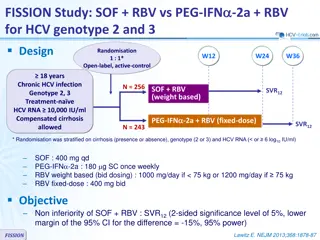
Classic Parsing Methods in NLP: Top-Down Approach Explained
Learn about classic parsing methods in natural language processing (NLP) through the top-down approach. Discover how this method analyzes sentences based on constraints from input sentences and grammars, providing valuable insights into NLP fundamentals.
Download Presentation

Please find below an Image/Link to download the presentation.
The content on the website is provided AS IS for your information and personal use only. It may not be sold, licensed, or shared on other websites without obtaining consent from the author. If you encounter any issues during the download, it is possible that the publisher has removed the file from their server.
You are allowed to download the files provided on this website for personal or commercial use, subject to the condition that they are used lawfully. All files are the property of their respective owners.
The content on the website is provided AS IS for your information and personal use only. It may not be sold, licensed, or shared on other websites without obtaining consent from the author.
E N D
Presentation Transcript
Introduction to NLP Classic parsing methods
S -> NP VP NP -> DT N | NP PP PP -> PRP NP VP -> V NP | VP PP DT -> 'a' | 'the' N -> 'child' | 'cake' | 'fork' PRP -> 'with' | 'to' V -> 'saw' | 'ate'
Parsing as search There are two types of constraints on the parses From the input sentence From the grammar Therefore, two general approaches to parsing Top-down Bottom-up
Top down parsing S S -> NP VP NP -> DT N | NP PP PP -> PRP NP VP -> V NP | VP PP DT -> 'a' | 'the' N -> 'child' | 'cake' | 'fork' PRP -> 'with' | 'to' V -> 'saw' | 'ate'
Top down parsing S S -> NP VP NP -> DT N | NP PP PP -> PRP NP VP -> V NP | VP PP DT -> 'a' | 'the' N -> 'child' | 'cake' | 'fork' PRP -> 'with' | 'to' V -> 'saw' | 'ate' VP NP
Top down parsing S S -> NP VP NP -> DT N | NP PP PP -> PRP NP VP -> V NP | VP PP DT -> 'a' | 'the' N -> 'child' | 'cake' | 'fork' PRP -> 'with' | 'to' V -> 'saw' | 'ate' VP NP NP PP
Top down parsing S S -> NP VP NP -> DT N | NP PP PP -> PRP NP VP -> V NP | VP PP DT -> 'a' | 'the' N -> 'child' | 'cake' | 'fork' PRP -> 'with' | 'to' V -> 'saw' | 'ate' VP NP NP PP
Top down parsing S S -> NP VP NP -> DT N | NP PP PP -> PRP NP VP -> V NP | VP PP DT -> 'a' | 'the' N -> 'child' | 'cake' | 'fork' PRP -> 'with' | 'to' V -> 'saw' | 'ate' VP NP DT N
Top down parsing S -> NP VP NP -> DT N | NP PP PP -> PRP NP VP -> V NP | VP PP DT -> 'a' | 'the' N -> 'child' | 'cake' | 'fork' PRP -> 'with' | 'to' V -> 'saw' | 'ate' S VP NP NP N VP DT NP PP child ate the PRP NP DT N DT N cake with the the fork
Bottom up parsing S -> NP VP NP -> DT N | NP PP PP -> PRP NP VP -> V NP | VP PP DT -> 'a' | 'the' N -> 'child' | 'cake' | 'fork' PRP -> 'with' | 'to' V -> 'saw' | 'ate' S VP NP NP NP PP NP N DT VP DT N PRP DT N child ate the cake with the the fork
Bottom up vs. top down methods Bottom up explores options that won t lead to a full parse Example: shift-reduce (srparser in nltk) Example: CKY (Cocke-Kasami-Younger) Top down explores options that don t match the full sentence Example: recursive descent (rdparser in nltk) Example: Earley parser Dynamic programming caches of intermediate results (memoization)
Recursive Descent Parser In nltk >>> from nltk.app import rdparser; >>> rdparser())
Introduction to NLP Shift-Reduce Parsing
Shift-Reduce Parsing A bottom-up parser Tries to match the RHS of a production until it can build an S Shift operation Each word in the input sentence is pushed onto a stack Reduce-n operation If the top n words on the top of the stack match the RHS of a production, then they are popped and replaced by the LHS of the production Breadth-first search Stopping condition The process stops when the input sentence has been processed and S has been popped from the stack
Shift-Reduce Parsing Example [ * the child ate the cake] S [ 'the' * child ate the cake] R [ DT * child ate the cake] S [ DT 'child' * ate the cake] R [ DT N * ate the cake] R [ NP * ate the cake] S [ NP 'ate' * the cake] R [ NP V * the cake] S [ NP V 'the' * cake] R [ NP V DT * cake] S [ NP V DT 'cake' * ] R [ NP V DT N * ] R [ NP V NP * ] R [ NP VP * ] R [ S * ] (S (NP (DT the) (N child)) (VP (V ate) (NP (DT the) (N cake))))
Shift-Reduce Parsing In nltk >>> from nltk.app import srparser; >>> srparser())




